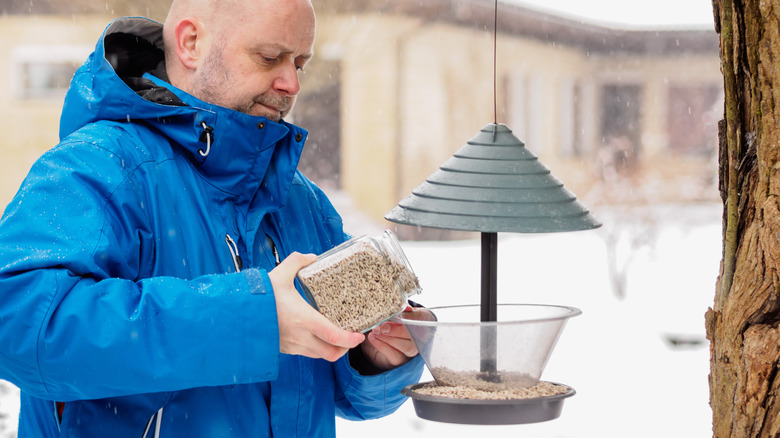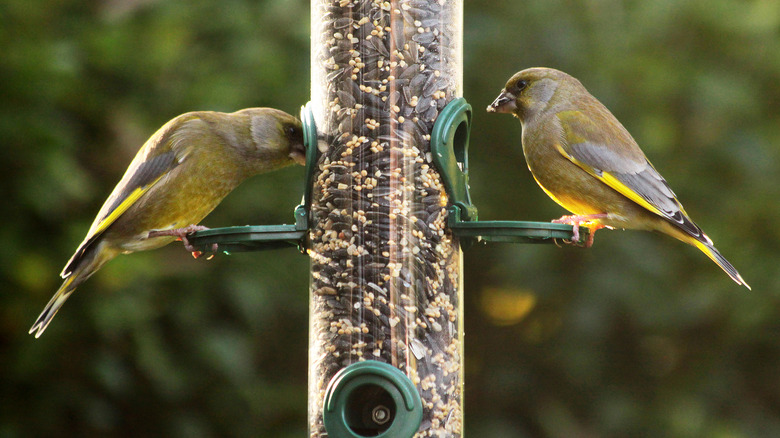Here's How Often You Should Really Be Changing The Seed In Your Bird Feeder
You just safely painted your bird feeder to freshen up its look and are anxiously waiting for a flock of fly-ins to feast at your hanging outdoor diner. A day goes by, not a single wing. Day five and less than a handful of warblers have come to nosh. By week two, the bird seed in the feeder has barely been touched. Should you save money and leave it or be proactive and change it out? To avoid harming the fine feathered friends you so desperately want to attract to your yard, it's best to change food in a dry seed feeder every five to seven days. Doing so will help prevent birds from ingesting moldy or germ-infested grub.
Whether you're filling a tube feeder or hopper design, it's common for homeowners to experiment with different varieties of bird food. While cracked corn, sunflower seeds, and millet are three of the most popular types of birdseed, there's no harm in adding thistle seeds and peanuts to the mix in order to attract a diversity of avians. The most convenient method of offering backyard birds such a variegated smorgasbord is to simply purchase pre-mixed blends from pet supply stores. However, don't be confused by the feed's expiration date. Most feature a two-year shelf life, though, for maximum freshness, the range is closer to six to 12 months. It is important to note that this timeframe doesn't apply to food that's already been placed in feeders.
Change seed at least once a week
Knowing how to store bird seed to keep it fresh is the first step in ensuring your backyard buffet won't harm any flying friends. Bulk feed should be placed in airtight, rodent- and insect-proof containers and stowed in a cool, dry area. Print the seed's purchase date on the outside of the canisters. Likewise, record the date you first used the new food to fill your bird feeder. This will make it easier for you to keep track of when the seeds need to be swapped out.
Aim to change the feed at least once a week; however, if your feeder has been exposed to high heat and excessive humidity, consider replacing food more often as moisture exacerbates mold growth. In fact, any type of dampness can initiate bacteria, including rain and melting snow. If you notice clumping or the seed blend feels damp, discard it and add a fresh batch to the feeder. While this may seem wasteful, it's a small price to pay to protect birds from sickness or potential death.
If you can't remember the last time you filled your bird feeder, look for signs of spoiling. Rancid bird feed will smell musty or sour. In addition, check for live or dead insects, visible mold, and sprouting seeds. If there is evidence of any of this, dump the existing food and clean the bird feeder with 9 parts of water to 1 part bleach prior to refilling it with fresh feed.

